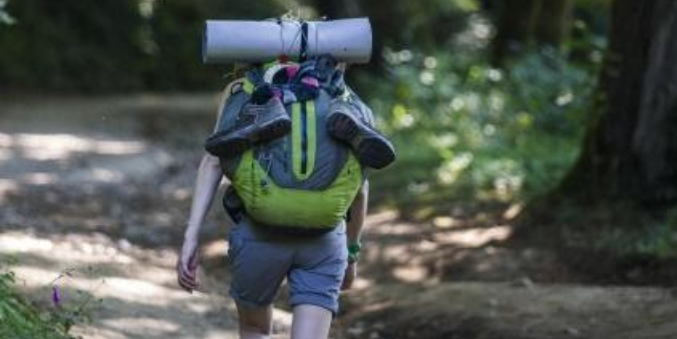Several women denounce the sexual harassment suffered on the Camino de Santiago.

The Xunta considers the aggressions as minority and offers shelters to provide support and help prevent gender-based violence
No one should be afraid to walk alone down the street or have to constantly look over their shoulder to make sure no one is following them. However, many women do it almost unconsciously. That same fear extends to all contexts, including the Camino de Santiago, paths where every female pilgrim should feel free to enjoy in solitude if she wishes.
Women pursued on remote roads, harassed by men displaying their genitals while masturbating or bothered by verbal assaults are some of the episodes of sexual violence that are repeated on the trails. The British publication The Guardian published yesterday the testimony of nine foreign women who, in the last five years, have reported cases of sexual harassment on their journey along the Camino.
These sexual violences do not correspond to the most common type of aggression
“I thought I was going to die, I thought he was going to hurt me,” says one of the women after a man masturbated in front of her and then chased her. Far from letting it go, the woman decided to report it because “she didn’t want it to happen to anyone else.” The Spanish justice system imposed a fine of 3,000 euros on her attacker, as well as a restraining order for 16 months. Out of the nine women, six filed complaints. However, only this case succeeded.
Ana Burgos, an anthropologist specialized in sexual violence, asserts that these types of violence do not fit the most commonly reported pattern of aggression, that is, those that occur in the domestic sphere (60%) and at the hands of people close to the victim
In this regard, “in cases of sexual violence during the Camino, aggressors take advantage of these transit spaces frequented by unknown women, both Spanish and foreign, to commit the assaults.” The anthropologist asserts that “impunity is reinforced when the victim is an unknown woman who likely faces difficulties in identifying the aggressor, compounded by being in a transient location.” These factors, in turn, discourage reporting. In fact, only 8% of victims report the incidents.
Fortunately, women “are organizing ourselves through networks,” and their voices cross borders, allowing the creation of support and advocacy spaces to listen to other testimonies. An example is Camigas, a Facebook page that connects pilgrims from all over the world. Lorena Gaibor, founder of the forum, describes sexual violence on the Camino as “endemic,” but “not surprising,” as they receive cases every year of women experiencing the same sexist violences.
They are “absolutely minority cases”
The Xunta de Galicia has assured La Vanguardia that the Camino de Santiago is “a safe place” and that these cases are “absolutely minor”, taking into account that “more than 200,000 women” participated last year. In this regard, the Xunta has pointed out that the Public Network of Xacobeo hostels is a suitable place to provide information, offer support, and help prevent gender-based violence.
In this line, from the International Fraternity of the Way of St. James (FICS), who defend and promote the values of the Camino, they also assure that it is a “safe” environment for women, although they do not rule out that these types of episodes may occur. “Pilgrims protect each other, warn each other, and take care of each other a lot… That is what allows the vast majority of women to go alone without any problem,” they explain.
